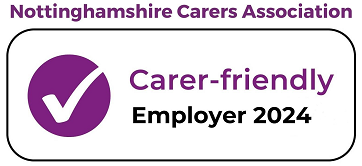Having a Bone Mineral Density Scan
Why have I been referred for a bone density scan?
You have been referred for a bone density measurement because you may be at risk of osteoporosis.
What is osteoporosis?
Osteoporosis is a condition in which thinning of the bones makes the bones weak. Broken bones (fractures) happen easily in people with osteoporosis. Any bone may fracture in osteoporosis including bones in the spine and the hip.
How can you tell if I have osteoporosis?
The most accurate test to identify osteoporosis is a bone mineral density (BMD) measurement using a DXA scanner. A measurement is usually made of your lower spine (back) and one hip.
What is a DXA scanner?
The DXA scanner is a piece of equipment that measures the amount of calcium in your bones (see
photograph). This tells us about the strength of your bones and how likely you are to be at risk of breaking bones in the future.
What does having a DXA scan involve?
You will be asked to lie down for the scans. For the spine scan your legs will be supported on a big cushion. For the hip scan one foot will be supported to keep your leg in the right position. You will be asked to keep still while each scan is done (about 2 to 3 minutes each). The arm of the scanner will move during the scan but you will not be in an enclosed space.
How safe is a DXA scan?
DXA uses very small amounts of X-rays. The dose of X-rays is about the same as you would be exposed to naturally in a day and is much less than in other medical tests such as a chest X-ray.
It is therefore a very safe test. However, ladies, if there is a chance you may be pregnant please tell us before your scan, as we would not
perform the scan since X-rays can harm a developing baby.
Do I have to prepare for the scan?
No special preparation is required. Metal interferes with the measurement and must be kept away from the area of the scan. You will be asked to take off any garments containing metal such as zips, corsets and under wired bras. If you wear clothes without any metal then you will not need to
undress. You will otherwise need to change into a gown.
The scan result may also be affected if you have recently had other tests such as an isotope scan or barium x-ray. If this is the case your scan may need to be delayed.
How long will the scan take?
The scan will take about 15 minutes in total. Whilst we try to see patients at the time of their appointment, delays can sometimes occur. If this happens we will keep you informed.
Why have I been asked to fill in a questionnaire?
Whilst the scan can tell us a lot about how much you may be at risk of developing osteoporosis, the questionnaire gives us important information about other things that may increase your risk of developing osteoporosis. Furthermore if you need treatment the information from the questionnaire will help us advise what is the best treatment for you.
How will I find out the result of my scan?
The results may be discussed with you after the scan. A report will be sent to the doctor who referred you and your GP. The report will give the result of the scan. We will let you know when the scan result should reach your doctor.
Will any other tests be done?
Depending on the information given by the doctor who referred you, we may also arrange other tests at the time of the scan. These may include X-rays and blood tests.
What if the scan shows I have osteoporosis?
If you have osteoporosis you may be advised to take treatment, usually in the form of tablets. It may also be helpful for you to have other tests to identify whether there is an underlying cause for your osteoporosis. You may be offered an appointment in the Osteoporosis clinic to have these tests and discuss the results.
Please remember to:
• Bring your completed questionnaire
• Let us know if you have had a recent a recent barium X-ray or isotope scan within the last 4 weeks
• Let us know if you could be pregnant
• Try and wear clothes with no metal
If you have any questions please contact us on: 01623 785124 or 785122





